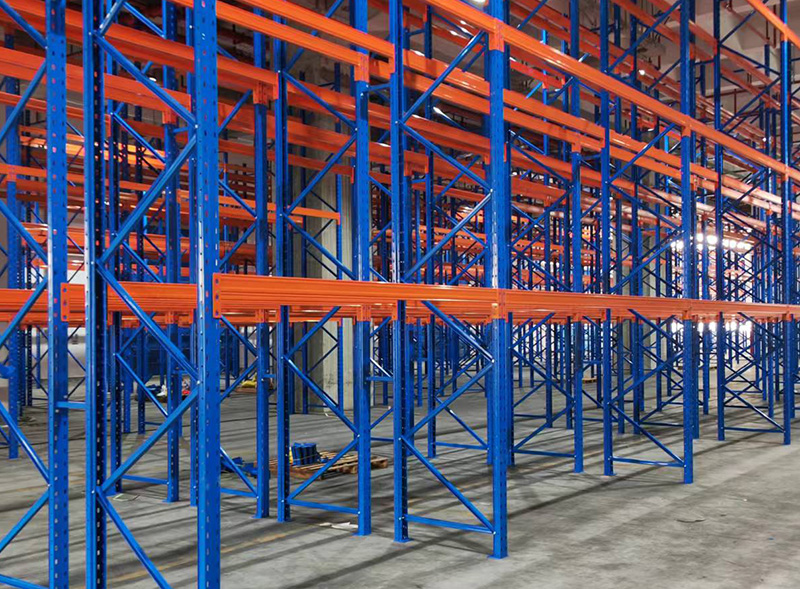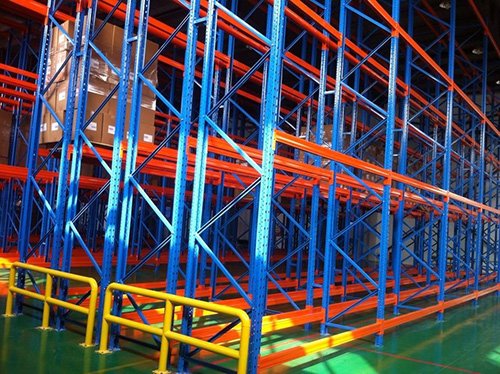In the intricate world of warehouse optimization and logistics efficiency, the unsung hero is often the racking material itself. While racking systems' design and layout receive significant attention, the fundamental substance from which they are constructed – the racking material – dictates their performance, longevity, safety, and ultimately, the success of your storage operations. Choosing the correct racking material is a critical strategic decision impacting everything from load capacity and durability to cost-effectiveness and compliance. This comprehensive guide delves deep into the five essential aspects you must consider when evaluating racking material, empowering you to make the most informed choice for your specific warehouse needs.

1. Types of Racking Material: Understanding the Core Options
The primary distinction in racking material lies between metal (overwhelmingly steel) and engineered polymers (plastic/composite). Each category offers distinct advantages and limitations:
Steel: The Industry Standard: Steel remains the dominant racking material for heavy-duty industrial applications. Its key forms include:
Structural Steel: Rolled into specific shapes (like beams and columns), offering immense strength for high-bay warehouses and very heavy pallet loads. This racking material is the backbone of large distribution centers.
Roll Formed Steel: Sheets of steel are shaped through rollers into lighter but still strong profiles (like upright frames and beams). This racking material is cost-effective for medium-duty applications and offers excellent versatility.
Wire Mesh: Used primarily for decking (shelves) in selective pallet racking or carton flow systems. This racking material allows for visibility, light penetration, and debris fall-through.
Engineered Polymers (Plastic/Composite): The Modern Contender: Gaining significant traction, especially in specific niches, this racking material category includes:
High-Density Polyethylene (HDPE): Known for excellent chemical resistance and impact strength. Often used for pallet support components or in corrosive environments where steel might degrade.
Polypropylene (PP): Offers good stiffness, chemical resistance, and is often used for totes, bins, or light-duty shelving inserts. Less common as primary structural racking material for heavy pallets.
Reinforced Composites: Materials like fiberglass-reinforced plastics (FRP) offer high strength-to-weight ratios and exceptional corrosion resistance. Used in specialized applications like cold storage or chemical warehouses where traditional racking material fails.
Hybrid Solutions: Often, the optimal solution combines materials. Steel frames might utilize polymer decking for specific benefits, or composite components might be integrated into a primarily steel system.
2. Key Properties and Performance Characteristics of Racking Material
The intrinsic properties of the chosen racking material directly determine how the racking system performs under operational stress:
Strength and Load Capacity: This is paramount. Racking material must withstand the static weight of stored goods (dead load) and dynamic forces like impact from forklifts, seismic activity (in certain regions), and load shifting. Steel's high tensile and yield strength makes it ideal for the heaviest loads. Polymers must be specifically engineered and tested to meet required load capacities, often excelling in lighter to medium-duty applications or specific components.
Stiffness and Deflection: Racking material needs sufficient stiffness to minimize deflection (bending) under load. Excessive deflection can compromise stability, make loading/unloading difficult, and potentially lead to failure. Steel generally offers high stiffness. Polymers require careful design consideration to achieve comparable stiffness without excessive bulk.
Durability and Impact Resistance: Warehouses are harsh environments. Racking material must resist denting, gouging, and deformation from forklift impacts. Steel is robust but can dent; thicker gauges or protective features help. High-impact polymers like HDPE can absorb impacts well without permanent deformation, bouncing back better in some scenarios.
Corrosion and Chemical Resistance: Exposure to moisture, cleaning chemicals, stored goods (like fertilizers, salts, or food acids) can rapidly degrade unsuitable racking material.
Steel: Requires protective coatings (paint, powder coating, galvanization - hot-dip galvanized being superior) to prevent rust. The quality and thickness of the coating are critical factors in the longevity of this racking material.
Polymers/Composites: Inherently resistant to a wide range of chemicals and moisture, making them superior in wet, humid, or corrosive environments (e.g., cold storage, food processing, chemical storage). This is a major advantage for this type of racking material.
Weight: Steel racking is significantly heavier than polymer alternatives. This impacts shipping costs, ease of installation, and potentially the structural requirements of the warehouse floor slab. Polymer racking material offers a substantial weight reduction advantage.

3. Safety, Compliance, and Fire Resistance
Safety is non-negotiable in warehouse operations, and the racking material plays a crucial role:
Structural Integrity: The racking material must maintain its integrity under the specified loads throughout its lifespan. Failure can lead to catastrophic collapses. Regular inspections are vital to identify damage (bends, cracks, corrosion) that compromises the racking material.
Design Standards and Compliance: Reputable racking systems built from appropriate racking material are designed and tested to meet rigorous international and national standards (e.g., RMI (Rack Manufacturers Institute) in the US, EN 15635 in Europe, AS 4084 in Australia). Compliance ensures the system's engineering calculations for load capacity and safety factors are valid for the chosen racking material.
Fire Resistance: This is a critical differentiator:
Steel: While steel doesn't burn, it loses significant strength at temperatures reached in warehouse fires (around 500-600°C / 932-1112°F), leading to potential structural collapse. Fire protection systems (sprinklers) are essential.
Polymers: Most common thermoplastics (HDPE, PP) are combustible and will melt/burn, releasing smoke and potentially accelerating fire spread. However, specialized fire-retardant (FR) grades of polymer racking material exist, and composite materials (like FRP) can offer much higher fire resistance, sometimes meeting specific fire safety standards for building materials. Fire resistance must be a key consideration when selecting polymer racking material and requires explicit verification with the manufacturer.
4. Cost Considerations: Initial Outlay vs. Total Cost of Ownership (TCO)
Evaluating racking material cost goes far beyond the initial purchase price per beam or upright:
Material Cost:
Steel: Costs fluctuate with global steel markets. Roll-formed steel is generally more economical than structural steel. Coating type (paint vs. galvanized) significantly affects price.
Polymers/Composites: High-performance engineering polymers or composites often carry a higher initial material cost per component compared to standard steel. Simpler polymer components might be competitive.
Fabrication and Installation Cost: Steel fabrication is highly mature. Polymer components, especially complex ones, might have different manufacturing processes. Weight differences impact shipping and installation labor costs – lighter polymer racking material can offer savings here.
Maintenance and Repair Cost: Damaged steel racking often requires component replacement. Polymer components, due to their impact resilience and corrosion resistance, may require less frequent repair. However, repairing polymer can sometimes be more complex or require specialized parts. The longevity of the racking material directly influences long-term maintenance costs.
Lifecycle and Replacement Cost: High-quality, well-maintained, corrosion-protected steel racking can last decades. Polymer racking material lifespan depends heavily on the specific polymer, UV exposure (if applicable), and load conditions but can also be very long, especially indoors. Corroded steel has a drastically reduced lifespan, increasing replacement frequency and TCO.
Operational Efficiency Cost: Factors like reduced damage to goods or forklifts from a more resilient polymer racking material, or the need for less frequent recoating of steel, contribute to TCO. Downtime for repairs is also a cost factor.
5. Application-Specific Selection: Matching Racking Material to the Environment
There is no single "best" racking material. The optimal choice depends entirely on the specific application and operating environment:
Heavy-Duty, High-Bay Warehousing (Distribution Centers): Structural or heavy-gauge roll-formed steel is almost universally the required racking material due to its unmatched strength and stiffness for massive loads and heights.
Medium-Duty Warehousing/Manufacturing: Roll-formed steel is the standard workhorse racking material. Robust polymer systems are increasingly viable here, especially where corrosion or impact resistance is a priority.
Cold Storage & Freezer Warehouses: This is a prime application for polymer or composite racking material. Their inherent corrosion resistance eliminates the risk of rust caused by constant condensation and harsh cleaning chemicals. Special cold-rated steel with appropriate coatings is also used but requires meticulous maintenance.
Corrosive Environments (Chemicals, Food/Beverage Processing, Marine): Polymer (HDPE, PP, PVDF) or fiberglass composite racking material excels here, resisting acids, alkalis, salts, and moisture far better than even well-coated steel. Galvanized steel is an option but requires diligent inspection and maintenance.
Light-Duty Storage, Kitting, Order Picking: Polymer shelving systems, bins, and carton flow components are very popular due to their light weight, cleanability, and impact resistance. Steel shelving is also common.
Automated Storage and Retrieval Systems (AS/RS): Requires extremely precise, robust, and dimensionally stable racking material. High-strength steel is typically used, with exacting tolerances. Polymer use is generally limited to specific components within the system.
Selecting the right racking material is a foundational decision that reverberates throughout your warehouse's efficiency, safety, and profitability. It's not merely a commodity purchase but a strategic investment. Understanding the distinct types (steel vs. polymer/composite), their core properties (strength, durability, corrosion resistance), the critical safety and compliance implications, the true total cost of ownership, and, crucially, the demands of your specific operational environment is essential.
While steel remains the dominant force for heavy lifting, advanced engineered polymers and composites have carved out vital niches, particularly where corrosion, weight, or impact resistance are paramount. There is no universal winner; the best racking material is the one that optimally balances performance, longevity, safety, compliance, and cost for your unique warehouse application. By carefully weighing the five aspects explored in this guide – Types, Properties, Safety, Cost (TCO), and Application – you can confidently choose the racking material that forms the strongest, safest, and most efficient foundation for your storage operations now and into the future. Always consult with reputable racking manufacturers and suppliers who can provide detailed specifications, load tables, and compliance certifications for their specific racking material and system designs.







